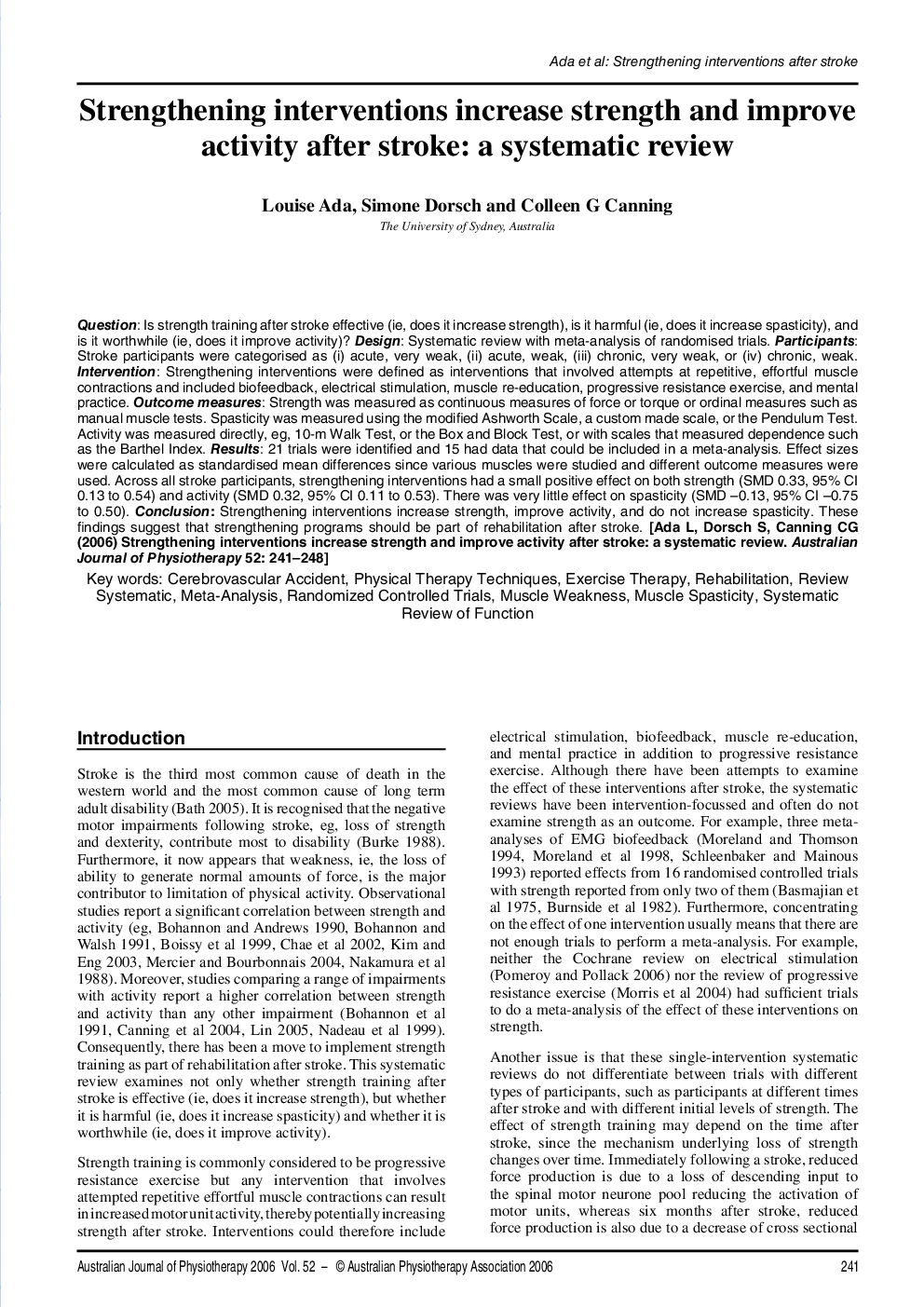| Article ID | Journal | Published Year | Pages | File Type |
|---|---|---|---|---|
| 2701212 | Australian Journal of Physiotherapy | 2006 | 8 Pages |
QuestionIs strength training after stroke effective (ie, does it increase strength), is it harmful (ie, does it increase spasticity), and is it worthwhile (ie, does it improve activity)?DesignSystematic review with meta-analysis of randomised trials.ParticipantsStroke participants were categorised as (i) acute, very weak, (ii) acute, weak, (iii) chronic, very weak, or (iv) chronic, weak.InterventionStrengthening interventions were defined as interventions that involved attempts at repetitive, effortful muscle contractions and included biofeedback, electrical stimulation, muscle re-education, progressive resistance exercise, and mental practice.Outcome measuresStrength was measured as continuous measures of force or torque or ordinal measures such as manual muscle tests. Spasticity was measured using the modified Ashworth Scale, a custom made scale, or the Pendulum Test. Activity was measured directly, eg, 10-m Walk Test, or the Box and Block Test, or with scales that measured dependence such as the Barthel Index.Results21 trials were identified and 15 had data that could be included in a meta-analysis. Effect sizes were calculated as standardised mean differences since various muscles were studied and different outcome measures were used. Across all stroke participants, strengthening interventions had a small positive effect on both strength (SMD 0.33, 95% CI 0.13 to 0.54) and activity (SMD 0.32, 95% CI 0.11 to 0.53). There was very little effect on spasticity (SMD –0.13, 95% CI –0.75 to 0.50).ConclusionStrengthening interventions increase strength, improve activity, and do not increase spasticity. These findings suggest that strengthening programs should be part of rehabilitation after stroke.
